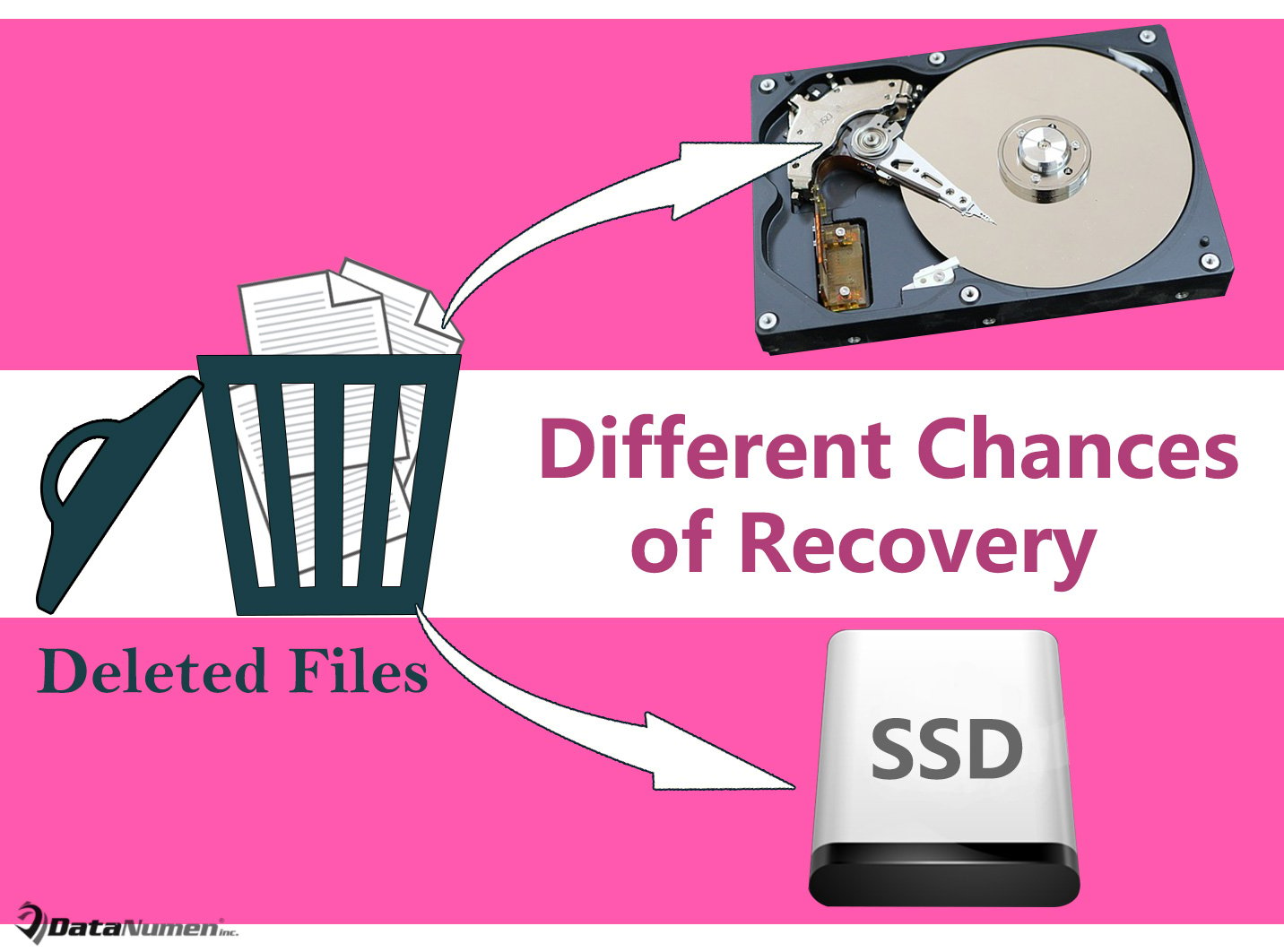If you unintentionally delete a file, you’ll make efforts to recover the deleted file. In this process, you may wonder the chances of such file recovery. In fact, the chances can vary with the drive types. Now, this post will delve into this issue on SSD and HDD.
Despite constantly improving performance and reliability of storage drives, data loss remain quite common in reality due to a variety of issues, including software faults, virus infection, power outages causing data corruption like corrupt PST as well as human errors. For example, it’s commonplace that you may delete files by mistake.
When it comes to file deletion, you may have heard multiple positive arguments that deleted files are almost always recoverable as long as without data overwrite. In fact, such an idea is not always effective and correct. It depends on the types of storage drives as well as the file systems, etc. Now, here we’ll expose the different chances for deleted file recovery on SSD and HDD.

SSD
1. Internal SSD
As we all know, SSD can work much faster than mechanical HDD. Apart from it using flash memory, it is also designed with a protocol of TRIM. This feature will automatically erase the files designated for deletion to leave the sectors empty. In this way, it’s pretty quick to read/write data to the SSD. Nowadays, most PCs have supported TRIM feature. Thus, if the SSD where you delete a file accidentally is an internal one, it is very likely that the data may have been erased by TRIM. In this case, the chances for recovery are considerably low and even totally impossible.
2. External SSD
However, if your SSD is an external one to the computer’s operating system, the matter will be different. External SSD will not make full use of the TRIM protocol. Hence, it means that such a SSD is simply similar to other type of removable drive, like USB flash drive. The file records of the deleted files will still exist in the drive until overwrite. That is to say, the deleted files are recoverable with ease.
HDD
Mechanical HDD are the most widely-used data storage media nowadays. Since SSD has the limited write-cycles, many users prefer to combine using SSD for performance and HDD for data storage in the same computer. On HDD, you needn’t concern about TRIM features alike. The files stored and deleted from HDD are recoverable until the data areas are written by any new files.
Author Introduction:
Shirley Zhang is a data recovery expert in DataNumen, Inc., which is the world leader in data recovery technologies, including corrupted mdf and outlook repair software products. For more information visit www.datanumen.com